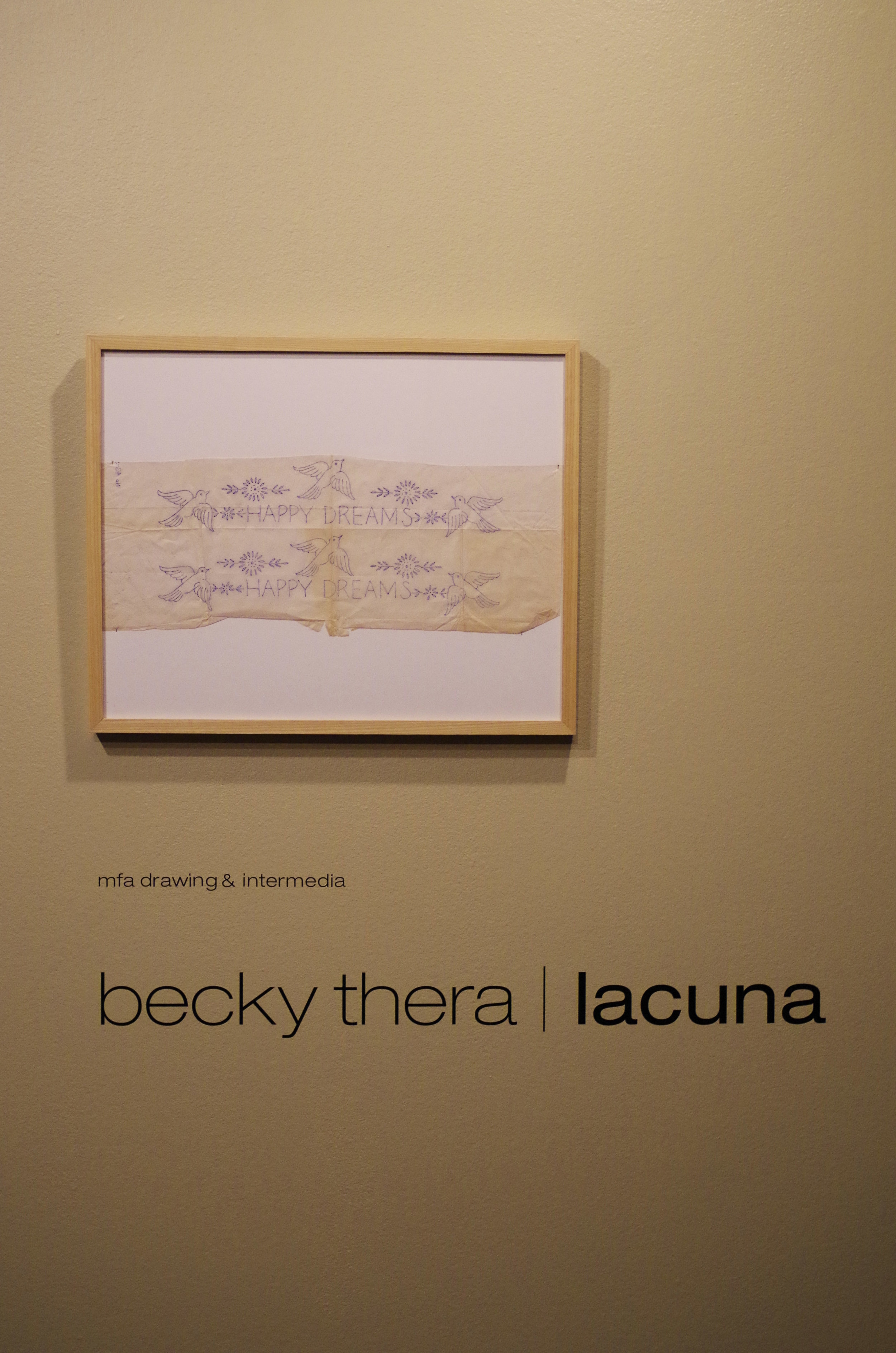
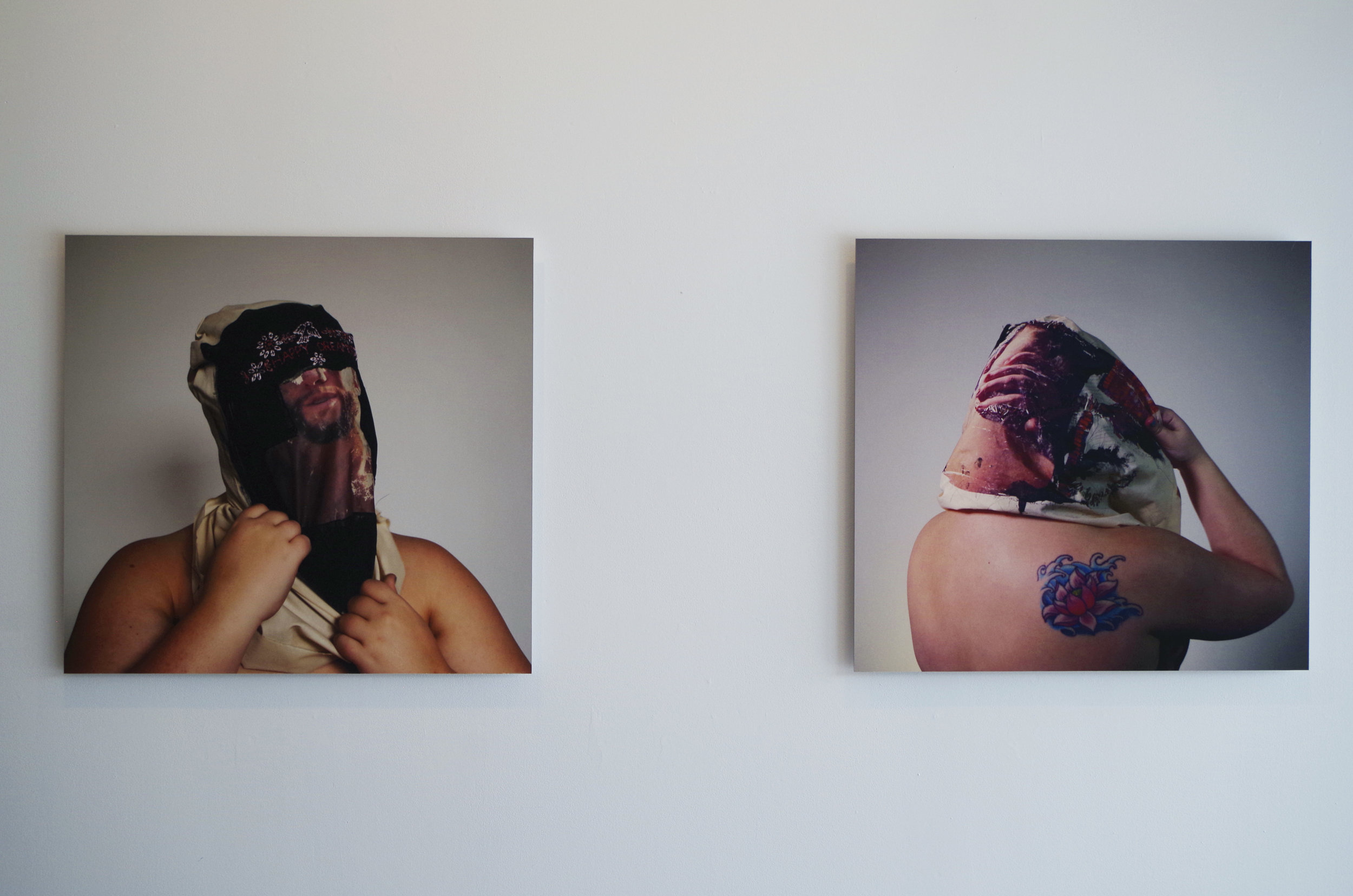
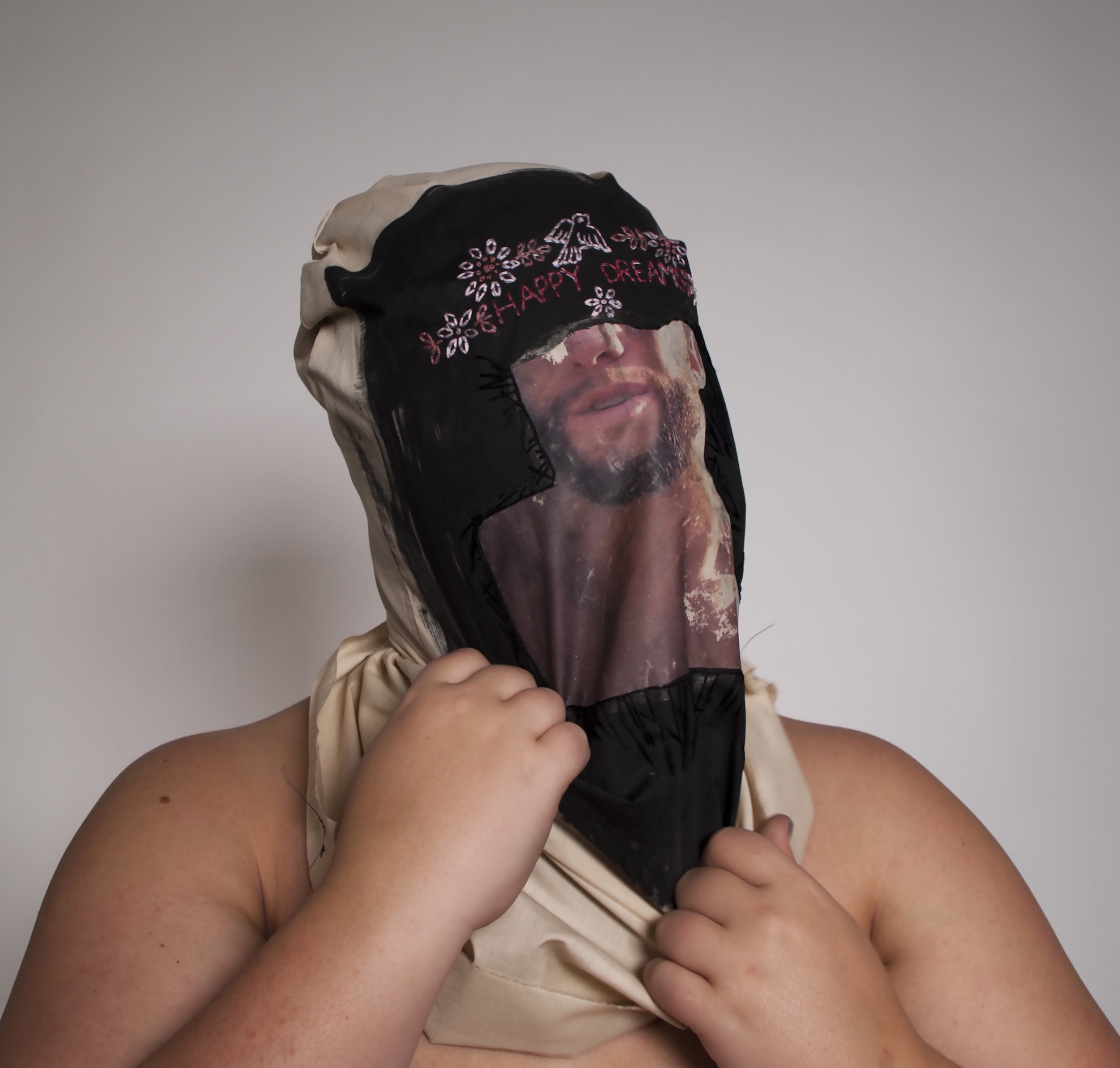
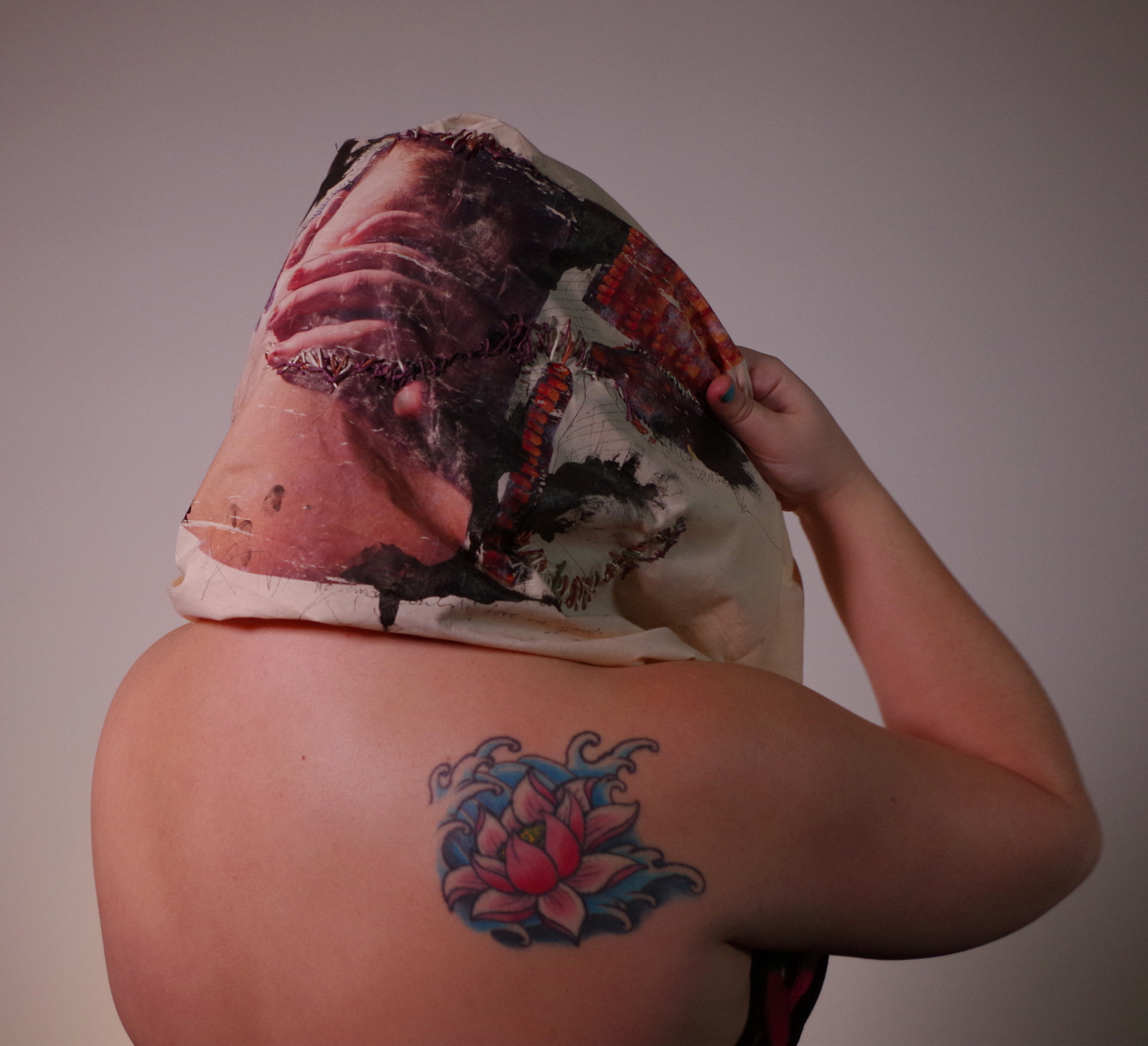
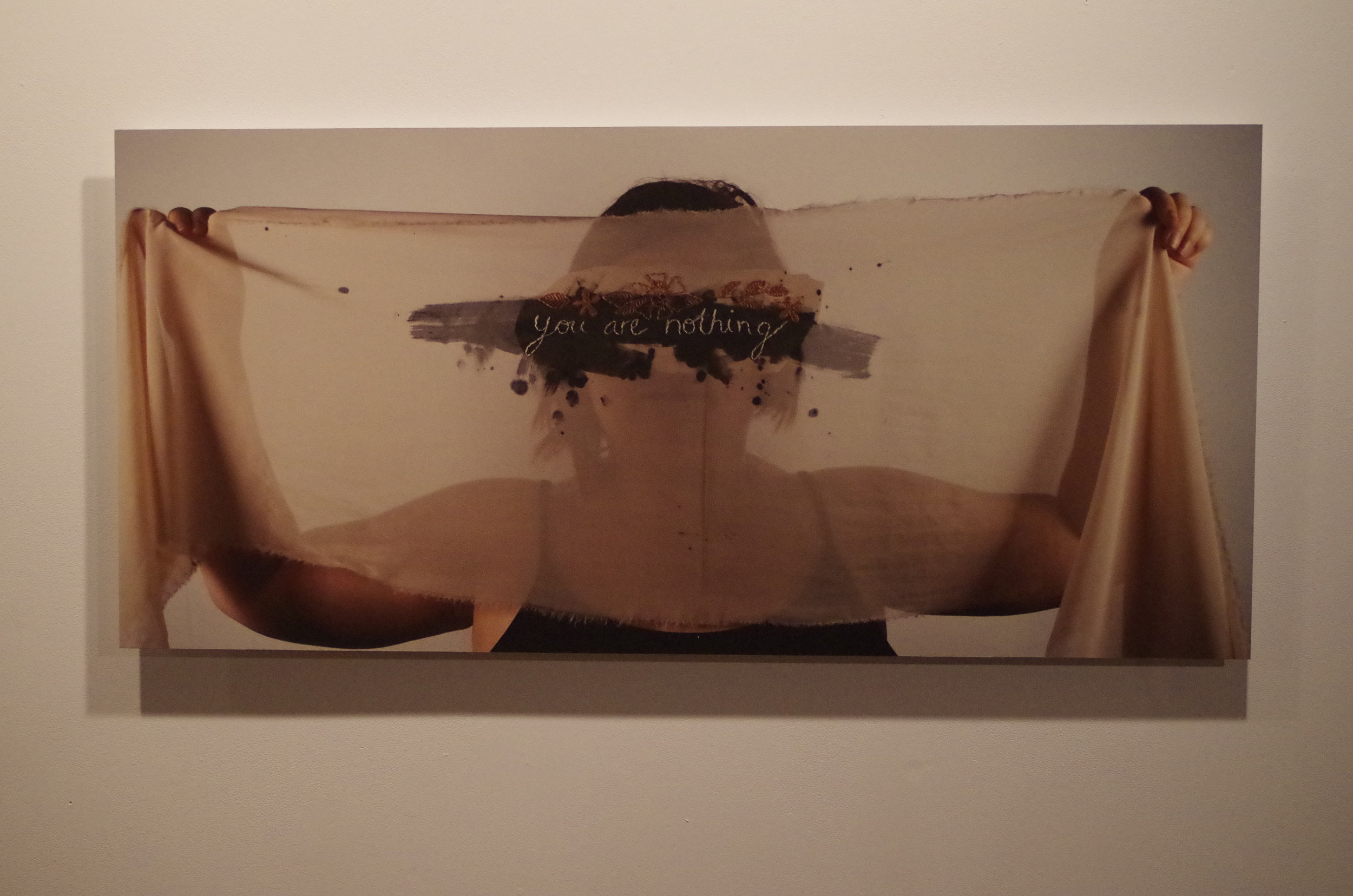
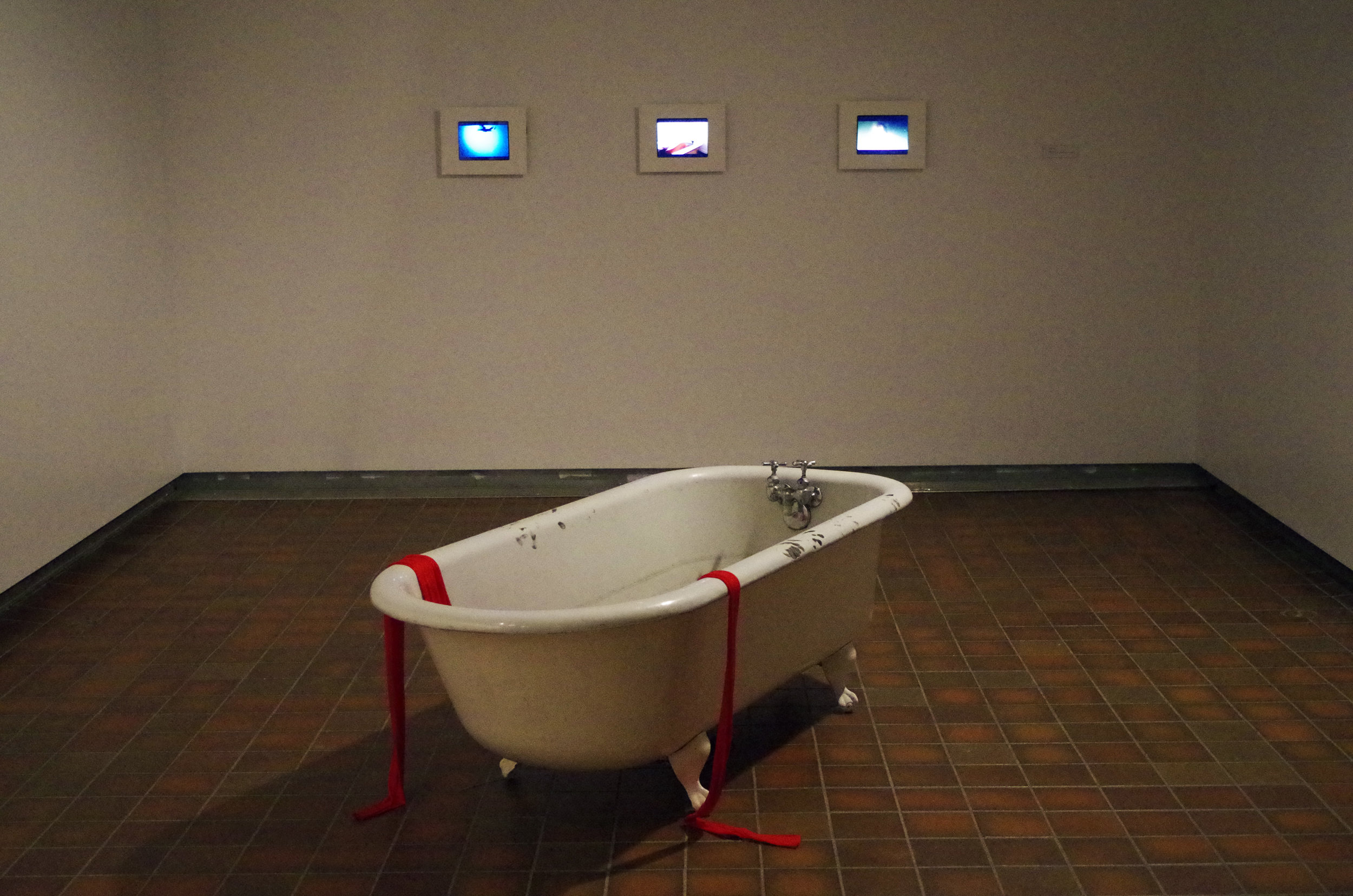
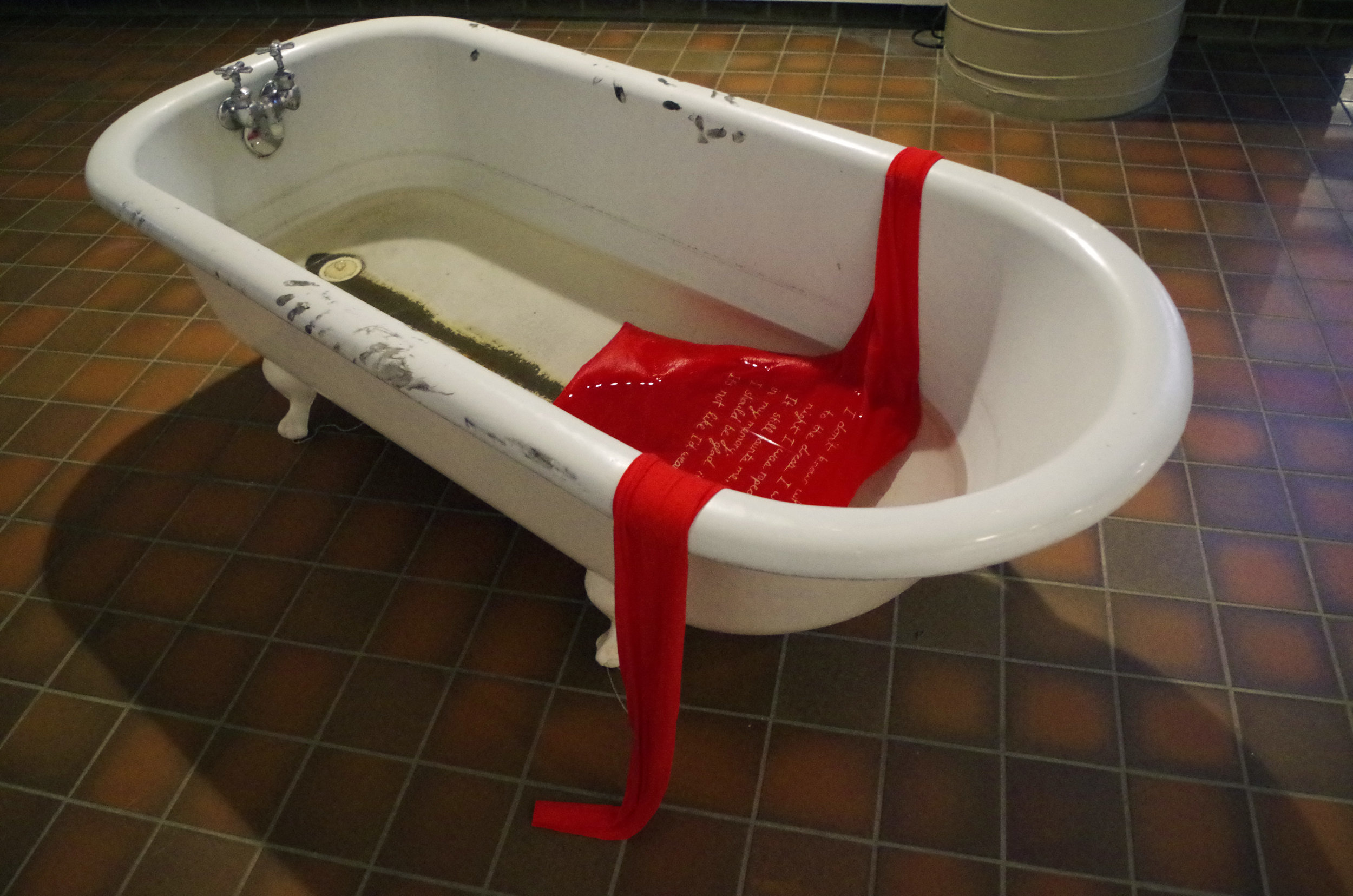
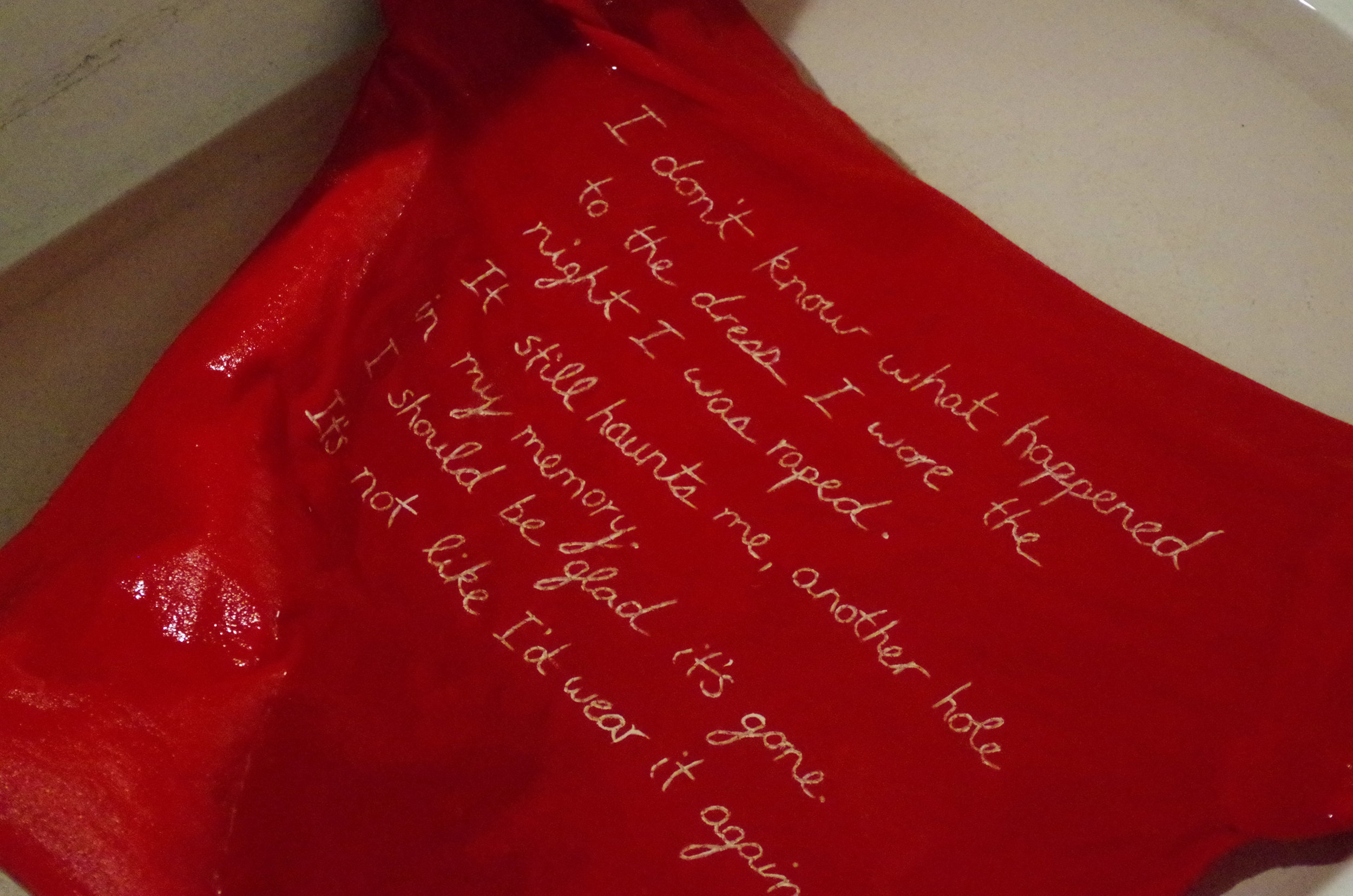
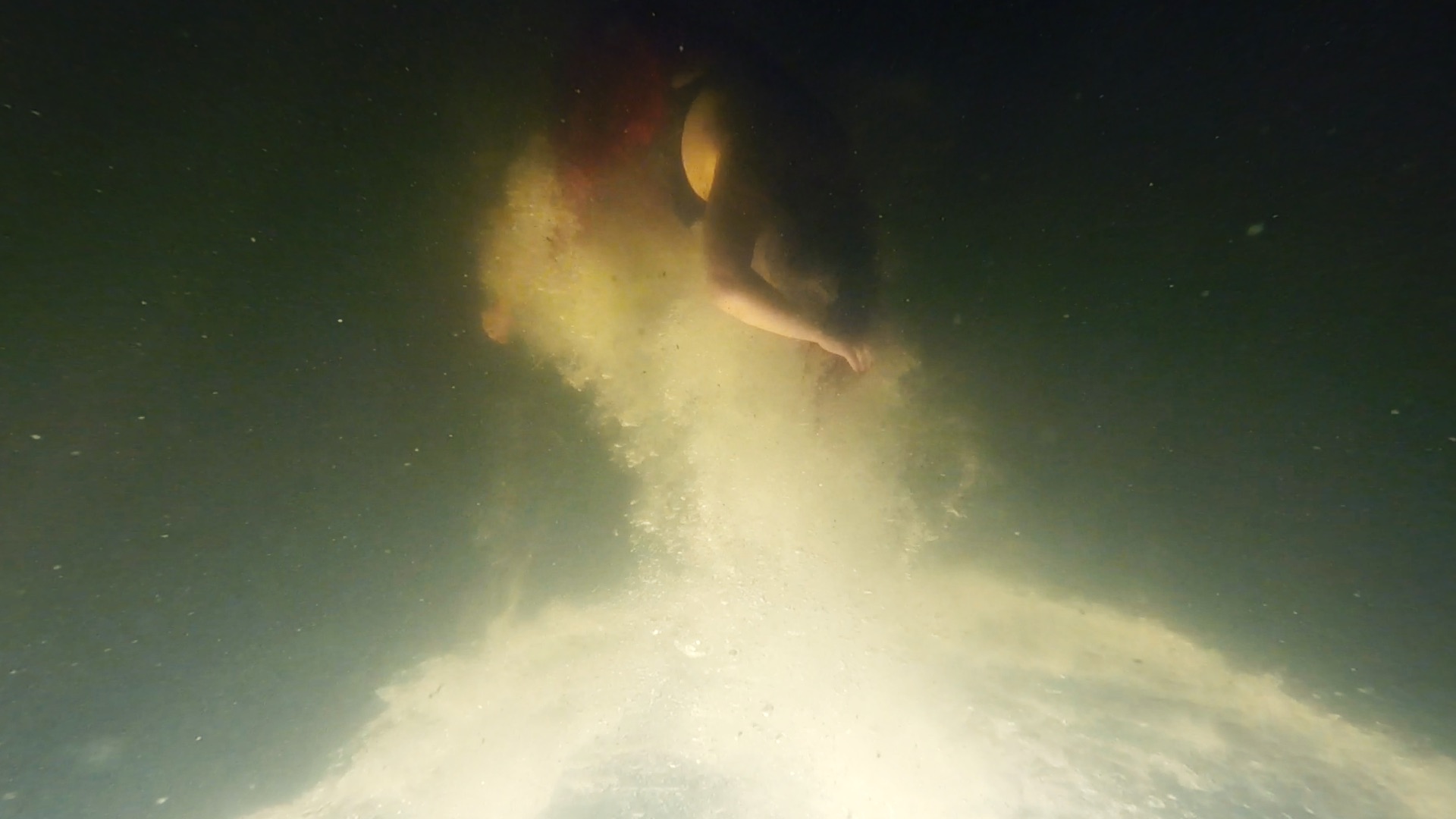
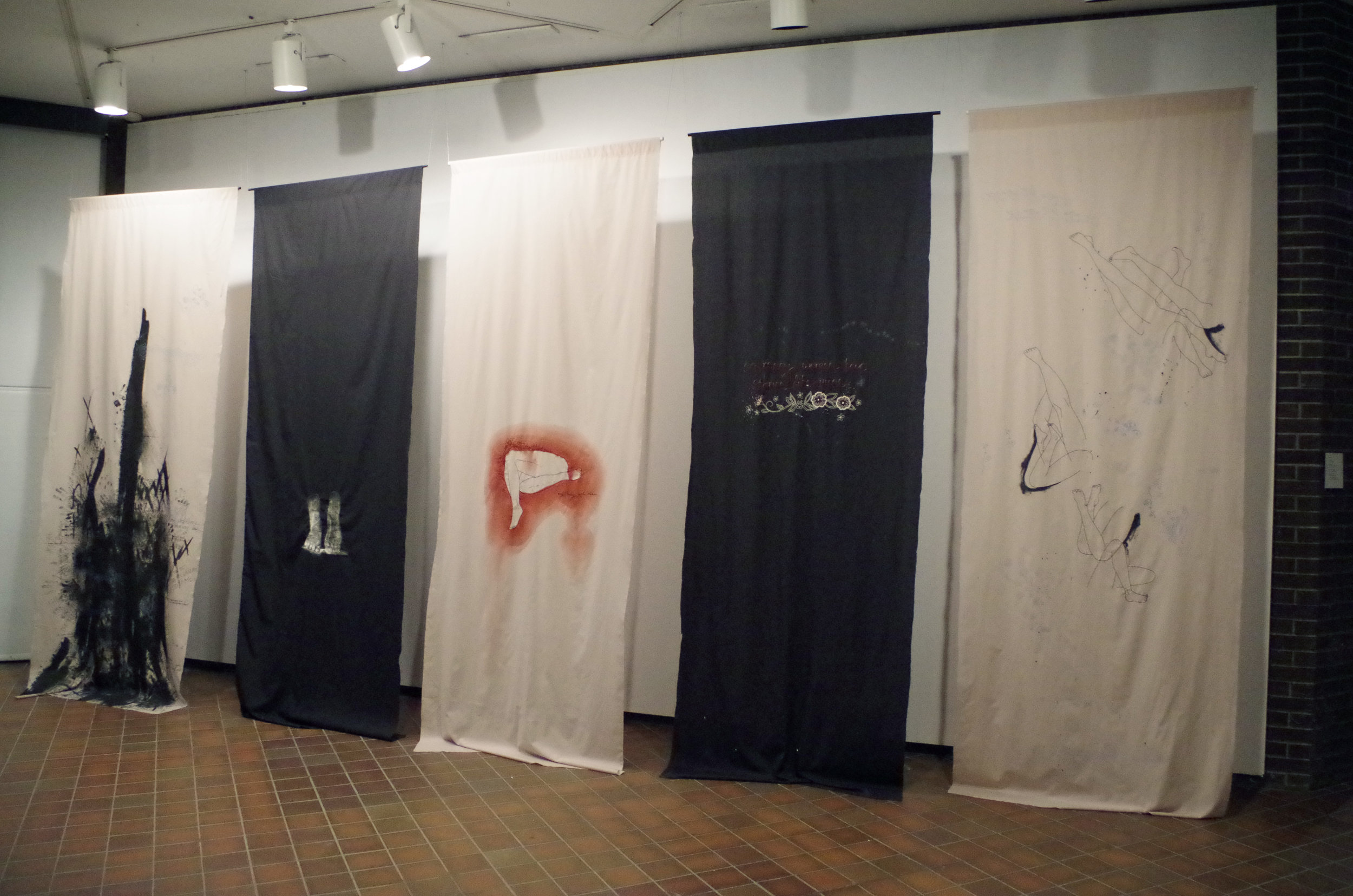
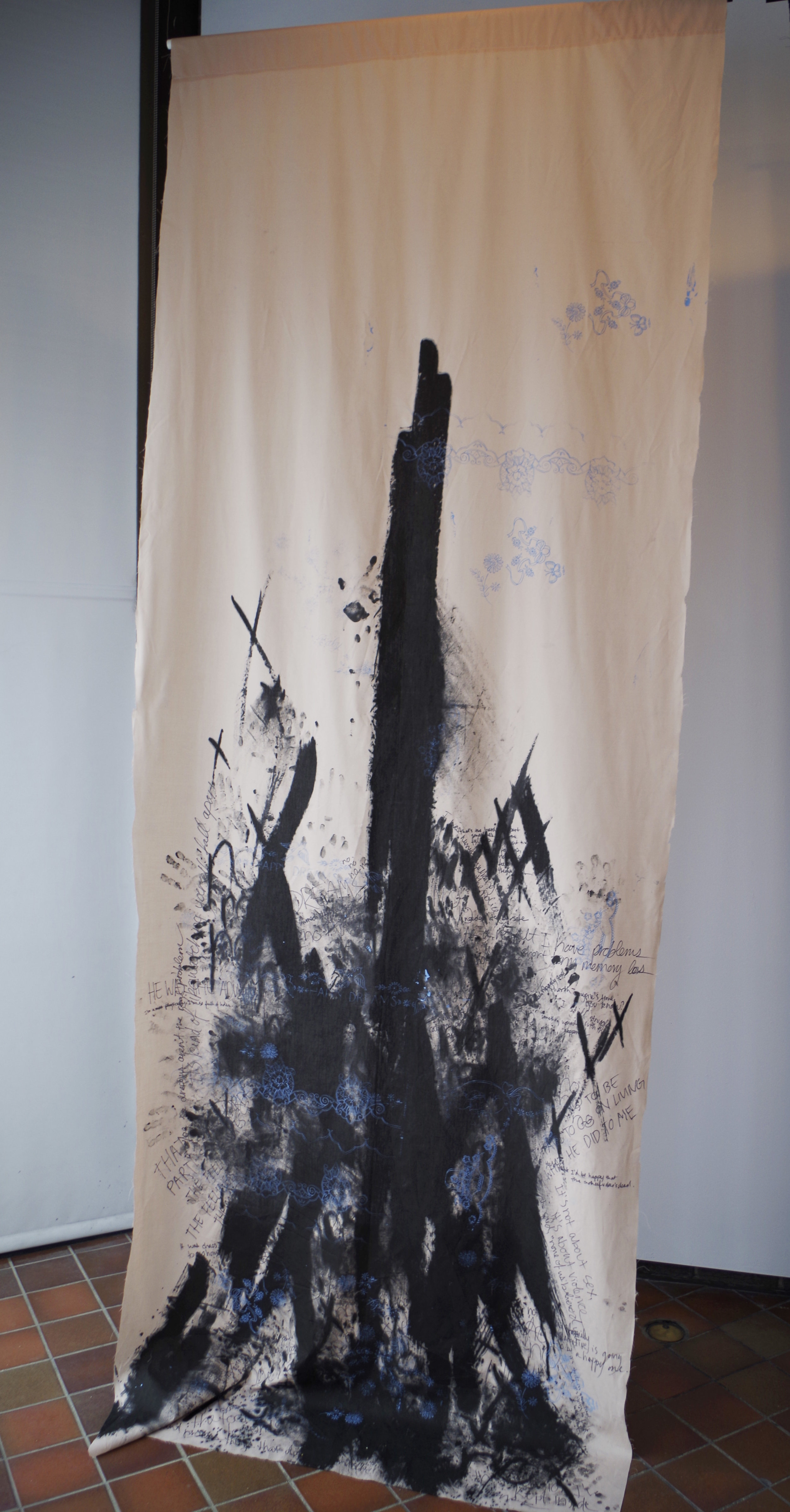
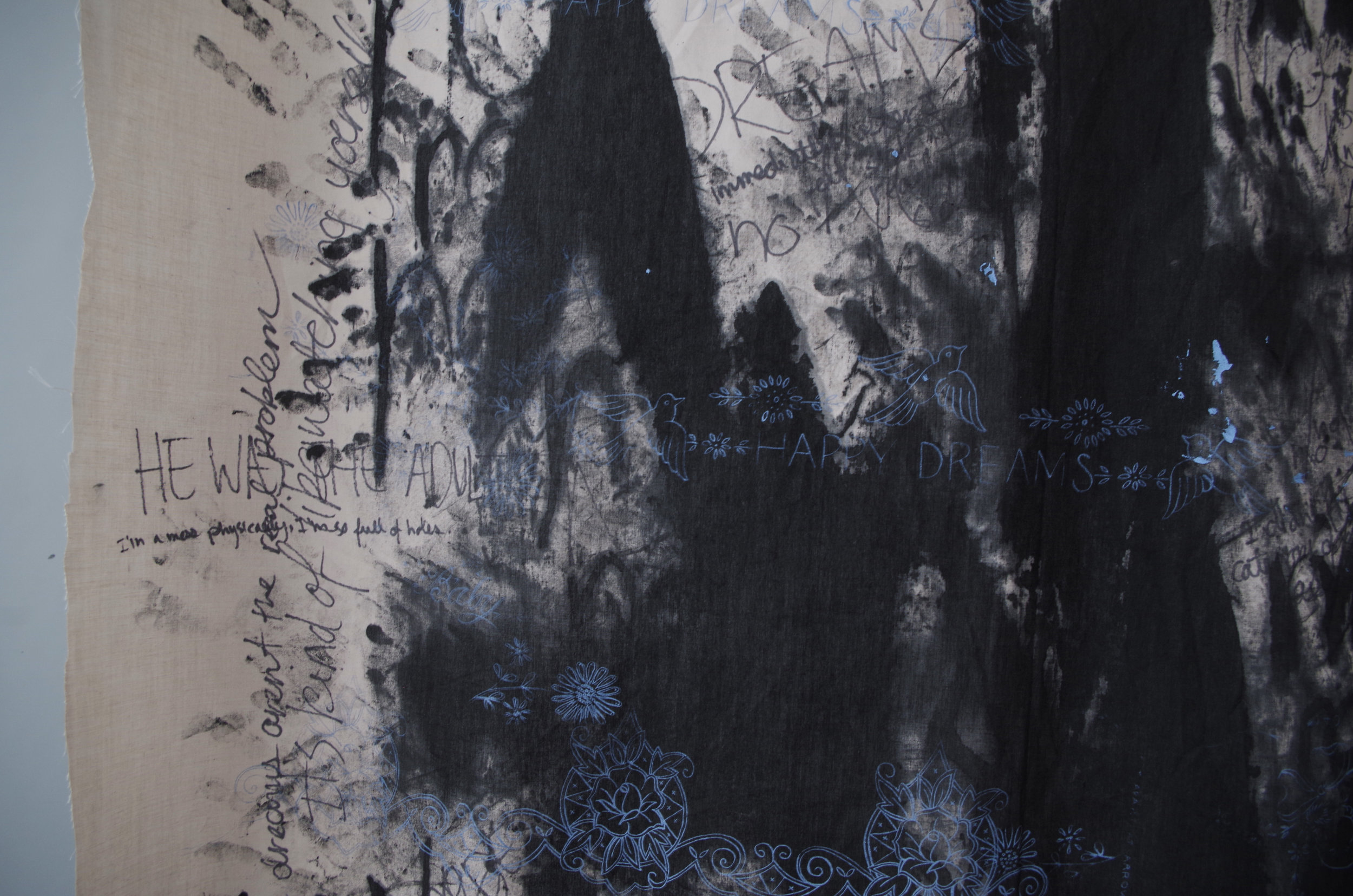
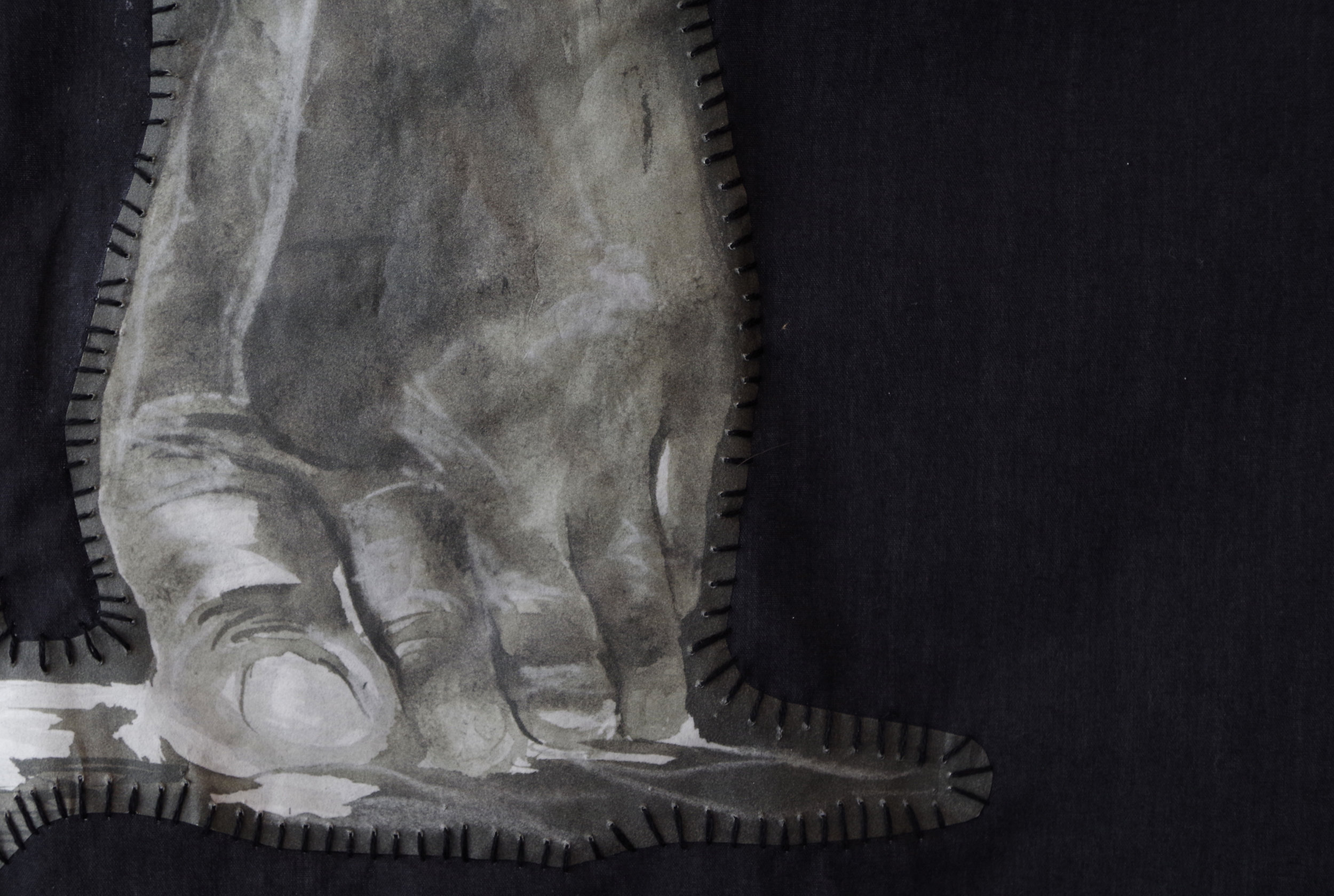
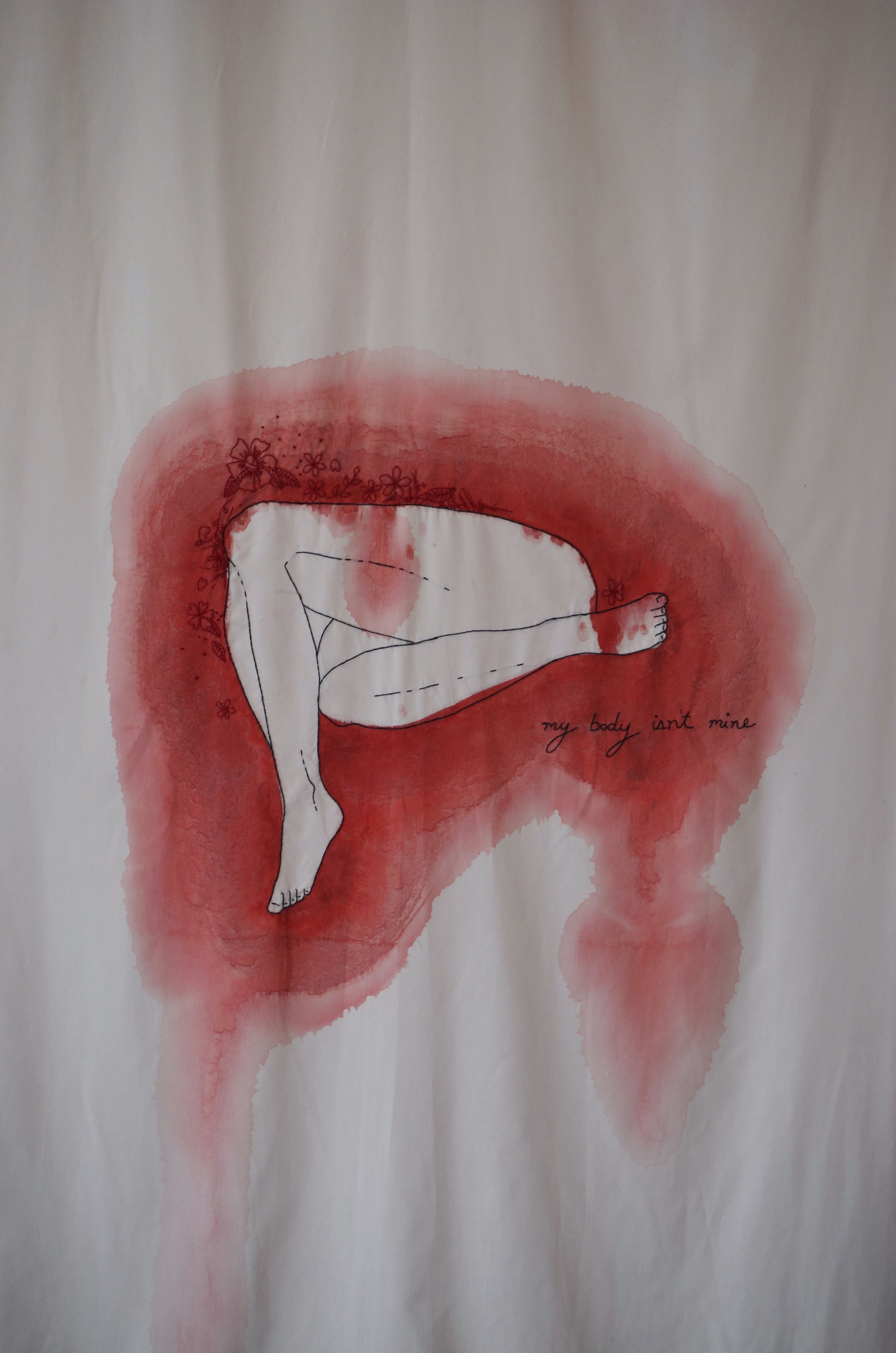
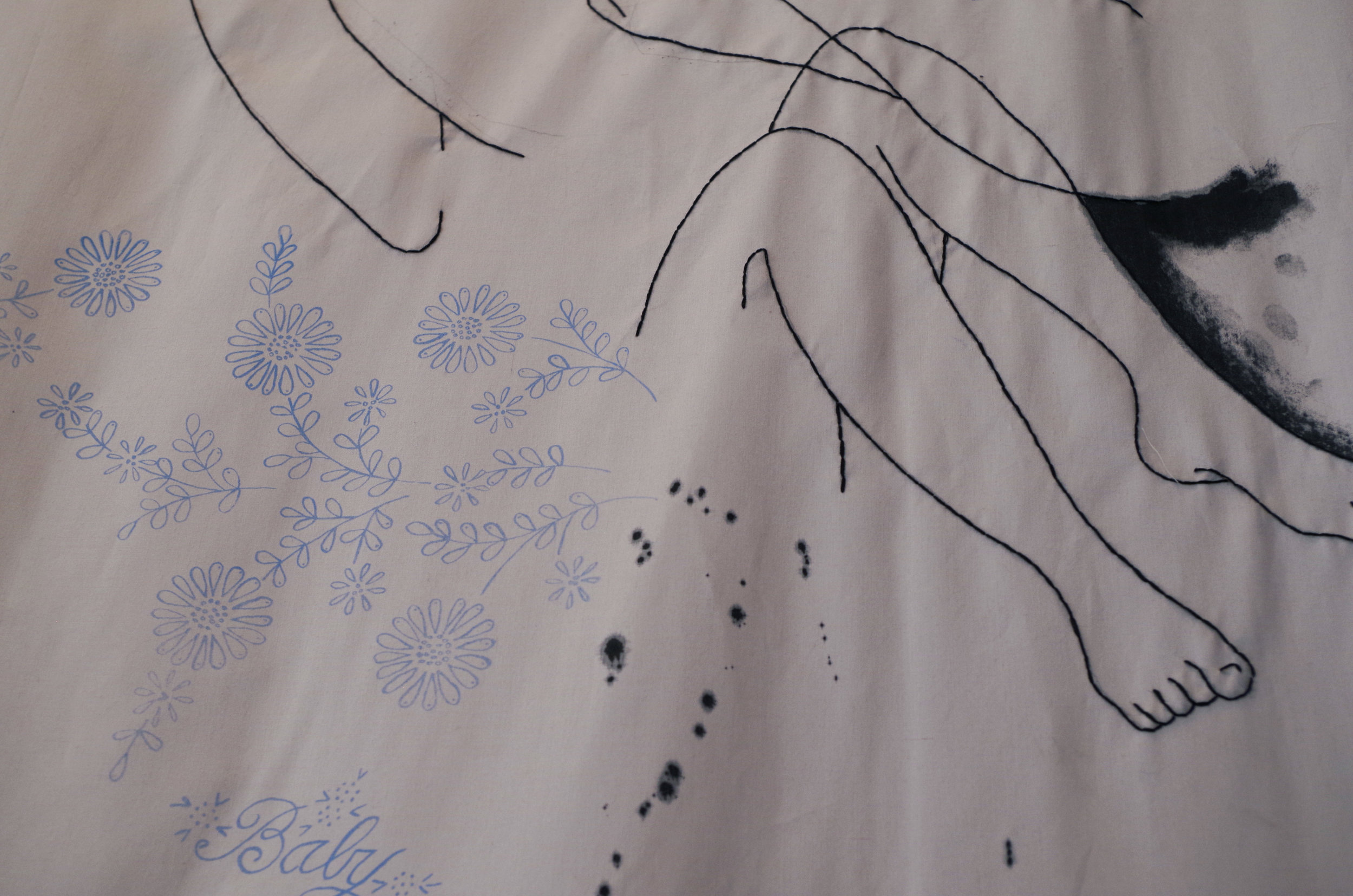
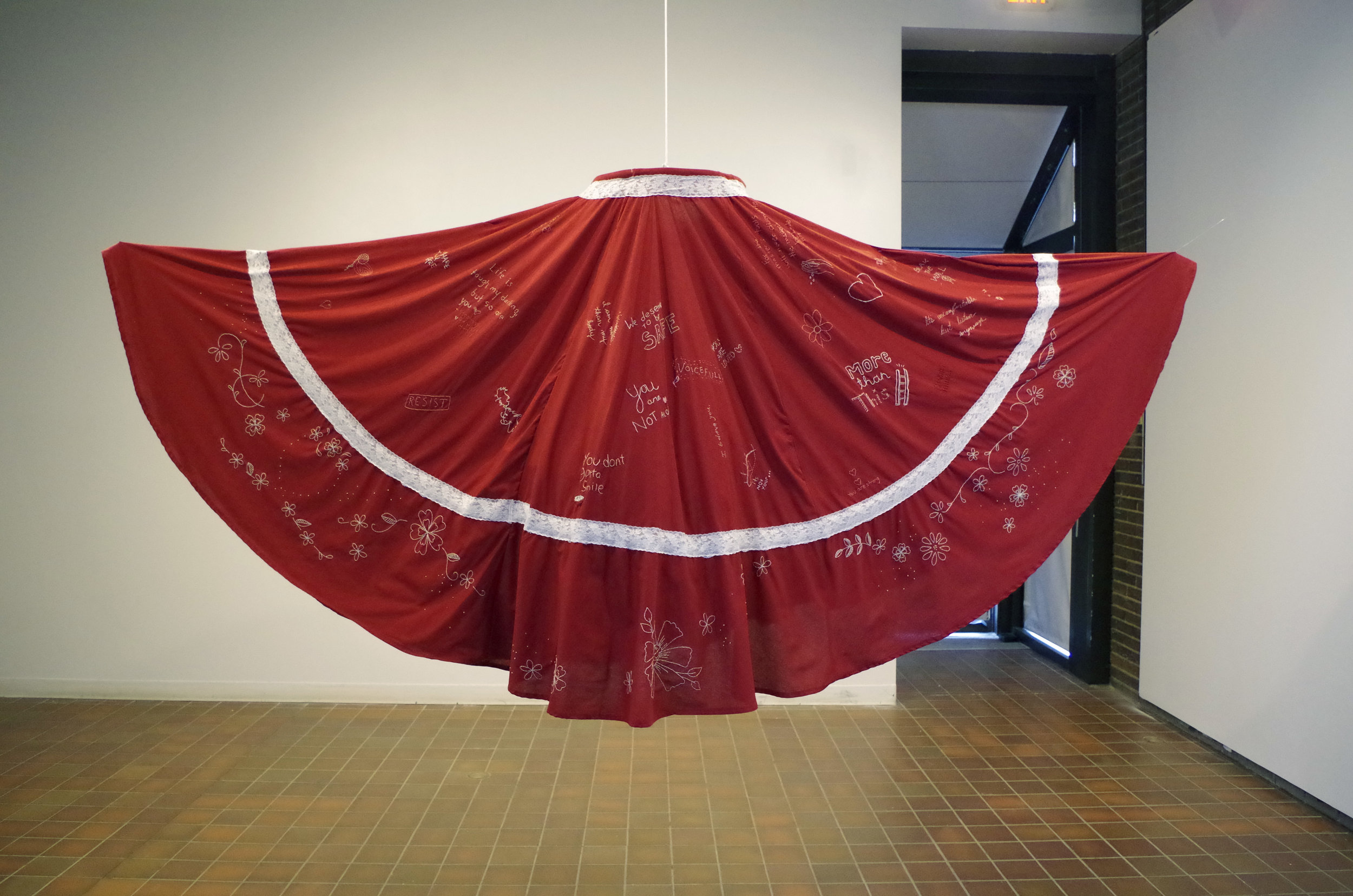







Your Custom Text Here
As survivors, our voices contain the language of resistance. Voices that have been silenced, dismissed and ignored for too long. Due to feelings of shame, humiliation or fear, over 80% of sexual assault victims do not report to the authorities (University of Alberta, 2015). With its roots in my personal efforts to navigate the aftermath of my assault, this exhibition is the culmination of my search for voice. I found my own, my great-grandmother’s and those of a few brave women who chose to share with me. These voices have built into an overwhelming mass to fill the lacuna of a lost history of survivors. In the words of Tracy Emin, “I start with myself and end up with the universe” (Brown, 2006).
The bathtub encompasses the horror of trauma – the disassociation, fear, and loneliness that fills its silence. I could float in the tub, completely untethered. In a world that feels frozen and distant, here I could feel. I could let go of all the tears that I could not cry in front of others. I could wash, a desperate attempt to feel clean again. To feel like me. There is a lingering violence in the unsaid, as I have felt the unspoken actions of my rape haunting me. In the stillness hangs the words of Dr. Laura Brown:
“These experiences are not unusual, statistically; they are well within the ‘range of human experience.’ They are the experiences of most of the women who come into my office every day. They are experiences that could happen in the life of any girl or woman in North America today. They are experiences to which women accommodate; potentials for which women make room in their lives and their psyches. They are private events, sometimes known only to the victim and perpetrator” (Brown, 2015).
As I began to access the language to discuss my personal trauma, I opened my practice up to the experiences of others. These voices ranged from the daily violence of cat-calling shared over a community stitching group to more gut-wrenching private interviews. The importance of feminist research methods rings true here, the need for story-telling as activism.
Our experiences are folded into the act of embroidery. A skill that was passed down to me from my great-grandmother, embroidery holds a history of women’s work and calls for empathy and care through each stitch. This technique brings in the voice of my great-grandmother, of generations of women who have suffered their own trauma.
The final gesture of this exhibition is the shout. The video acts as both poetry and activism, as it challenges our societal notions of what “normal sexual assault” looks like through the use of embodied affect. In our current political climate, art is necessary to explore the ugliness that accompanies gender-based oppression. The rawness of trauma. We deserve a place to embrace negative affect through feeling uncomfortable, angry, sad and confused. These emotions are as valuable as reason and thought, as valuable as hope and optimism. I want to embrace negative affect to propel change.
This exhibition is an investigation, an exploration, a journey. I want you to question your own experiences, to listen to others and to feel less alone than I did. Rape is a tool of patriarchal power, but we, the survivors, are stronger.
Brown, Laura S. “Not Outside the Range: One Feminist Perspective on Psychic Trauma.” In Trauma: Explorations in Memory, edited by Cathy Caruth, 100-112. Baltimore: The John Hopkins University Press, 1995. Accessed September 24, 2015.
Brown, Neal. Tracey Emin. London: Tate Publishing, 2006.
University of Alberta. “Understanding Sexual Assault.” Accessed November 3, 2015. https://uofa.ualberta.ca/current-students/sexual-assault-centre/understanding-sexual-assault.
As survivors, our voices contain the language of resistance. Voices that have been silenced, dismissed and ignored for too long. Due to feelings of shame, humiliation or fear, over 80% of sexual assault victims do not report to the authorities (University of Alberta, 2015). With its roots in my personal efforts to navigate the aftermath of my assault, this exhibition is the culmination of my search for voice. I found my own, my great-grandmother’s and those of a few brave women who chose to share with me. These voices have built into an overwhelming mass to fill the lacuna of a lost history of survivors. In the words of Tracy Emin, “I start with myself and end up with the universe” (Brown, 2006).
The bathtub encompasses the horror of trauma – the disassociation, fear, and loneliness that fills its silence. I could float in the tub, completely untethered. In a world that feels frozen and distant, here I could feel. I could let go of all the tears that I could not cry in front of others. I could wash, a desperate attempt to feel clean again. To feel like me. There is a lingering violence in the unsaid, as I have felt the unspoken actions of my rape haunting me. In the stillness hangs the words of Dr. Laura Brown:
“These experiences are not unusual, statistically; they are well within the ‘range of human experience.’ They are the experiences of most of the women who come into my office every day. They are experiences that could happen in the life of any girl or woman in North America today. They are experiences to which women accommodate; potentials for which women make room in their lives and their psyches. They are private events, sometimes known only to the victim and perpetrator” (Brown, 2015).
As I began to access the language to discuss my personal trauma, I opened my practice up to the experiences of others. These voices ranged from the daily violence of cat-calling shared over a community stitching group to more gut-wrenching private interviews. The importance of feminist research methods rings true here, the need for story-telling as activism.
Our experiences are folded into the act of embroidery. A skill that was passed down to me from my great-grandmother, embroidery holds a history of women’s work and calls for empathy and care through each stitch. This technique brings in the voice of my great-grandmother, of generations of women who have suffered their own trauma.
The final gesture of this exhibition is the shout. The video acts as both poetry and activism, as it challenges our societal notions of what “normal sexual assault” looks like through the use of embodied affect. In our current political climate, art is necessary to explore the ugliness that accompanies gender-based oppression. The rawness of trauma. We deserve a place to embrace negative affect through feeling uncomfortable, angry, sad and confused. These emotions are as valuable as reason and thought, as valuable as hope and optimism. I want to embrace negative affect to propel change.
This exhibition is an investigation, an exploration, a journey. I want you to question your own experiences, to listen to others and to feel less alone than I did. Rape is a tool of patriarchal power, but we, the survivors, are stronger.
Brown, Laura S. “Not Outside the Range: One Feminist Perspective on Psychic Trauma.” In Trauma: Explorations in Memory, edited by Cathy Caruth, 100-112. Baltimore: The John Hopkins University Press, 1995. Accessed September 24, 2015.
Brown, Neal. Tracey Emin. London: Tate Publishing, 2006.
University of Alberta. “Understanding Sexual Assault.” Accessed November 3, 2015. https://uofa.ualberta.ca/current-students/sexual-assault-centre/understanding-sexual-assault.
Installation view
Rapist, Within and Without
Rapist
Digital print on aluminum, 32” X 31”, 2017
Within and Without
Digital print on aluminum, 32” X 31”, 2016
you are nothing (to me)
Digital print on aluminum, 42” X 20”, 2016
Release
3 videos, bathtub, water, fabric, embroidery thread, 2018, 5.5’ X 2.5’
Release
Release
Video still
Banner installation
Silence
fabric, ink, silkscreen, 45”X 117”, 2018
Silence (detail)
Dissociation (detail)
my body isn't mine (detail)
Like Synchronized Swimmers (detail)
The Antitode
fabric, lace, embroidery, 10’X10’, 2018
The Antidote (installation)
The Antidote (installation)
The Antidote (detail)
Survivors
vinyl, installation, 2018
At Dawn, I Will Win (installation)
video, 2018
At Dawn, I Will Win (video still)
At Dawn, I Will Win (video still)